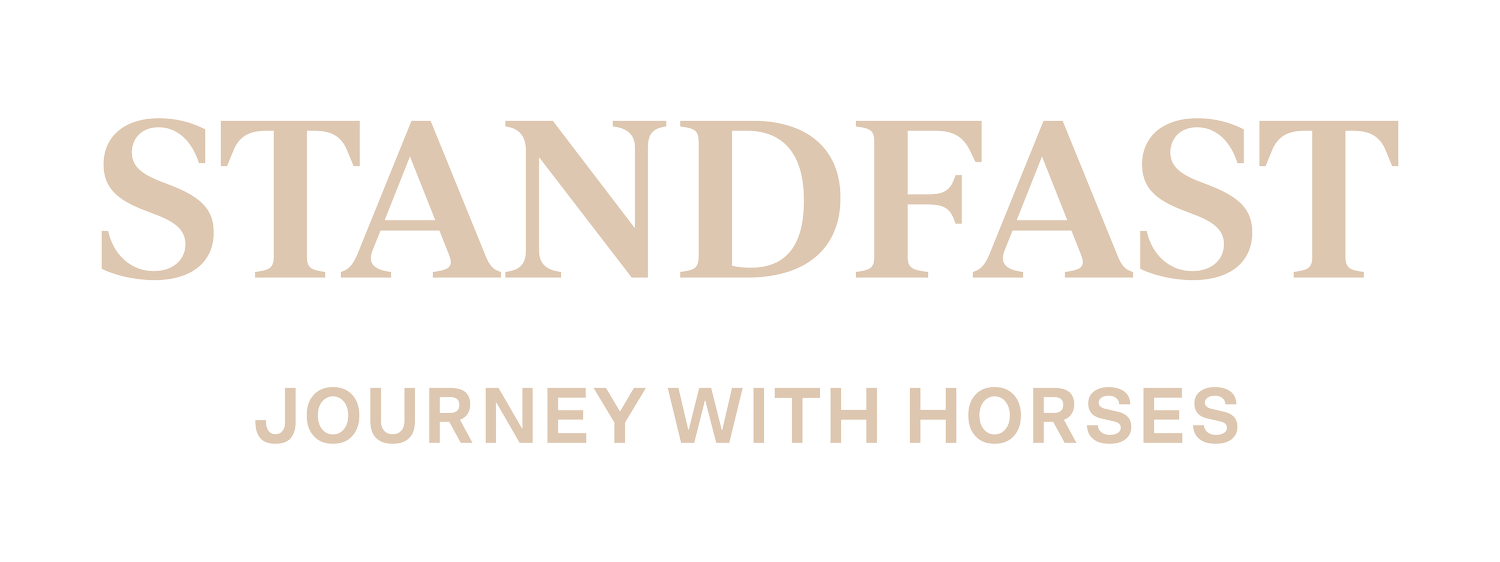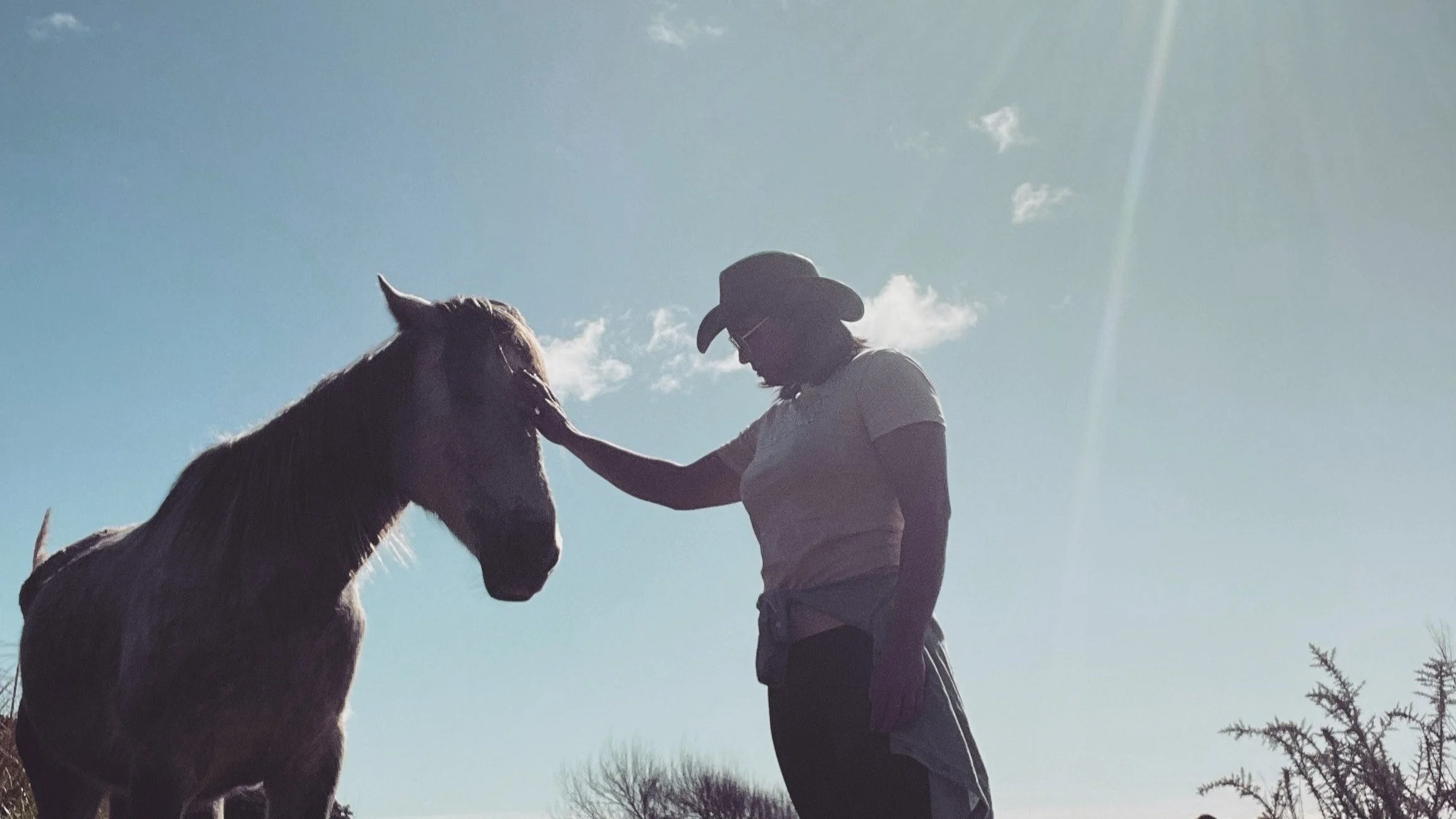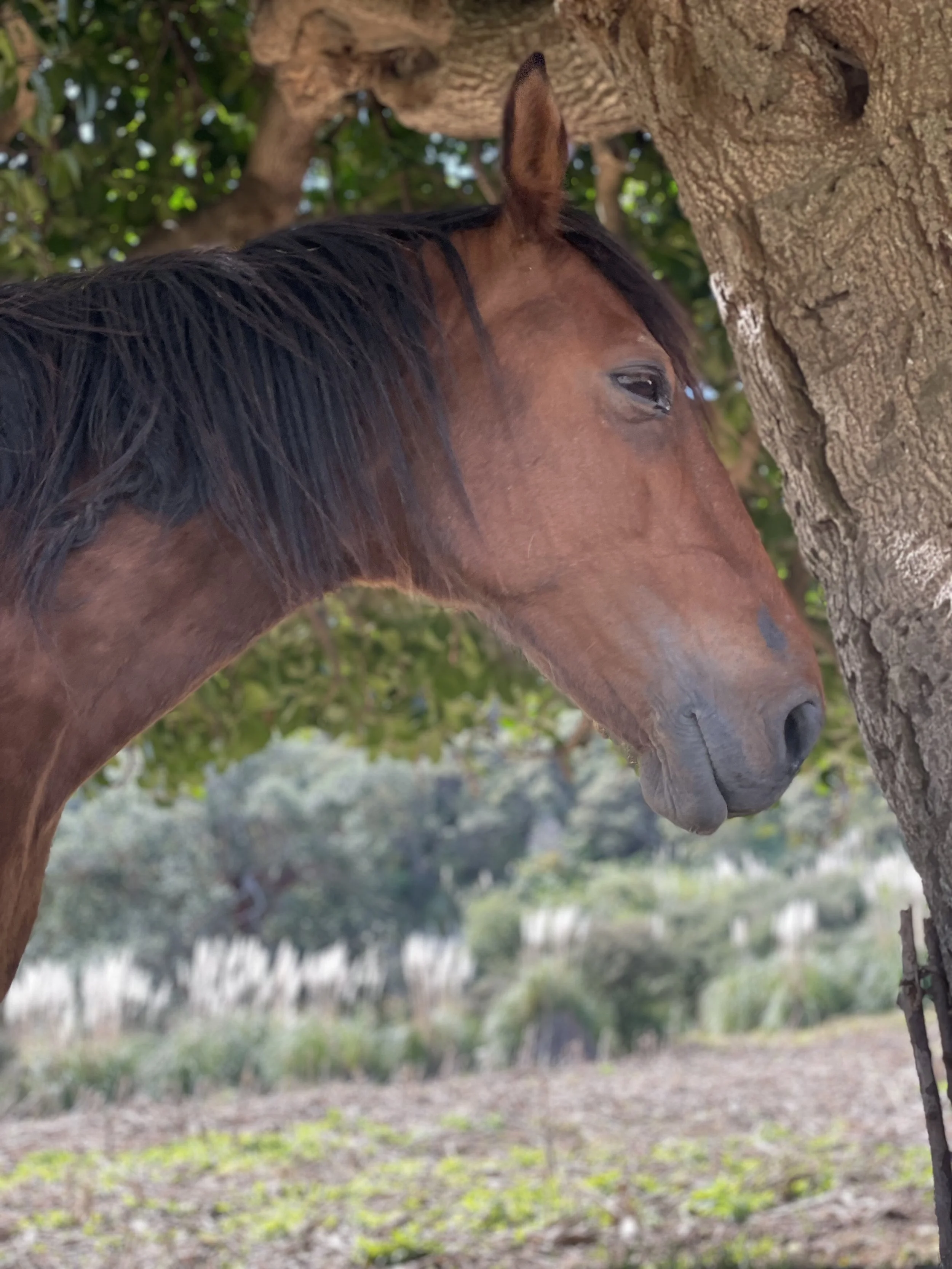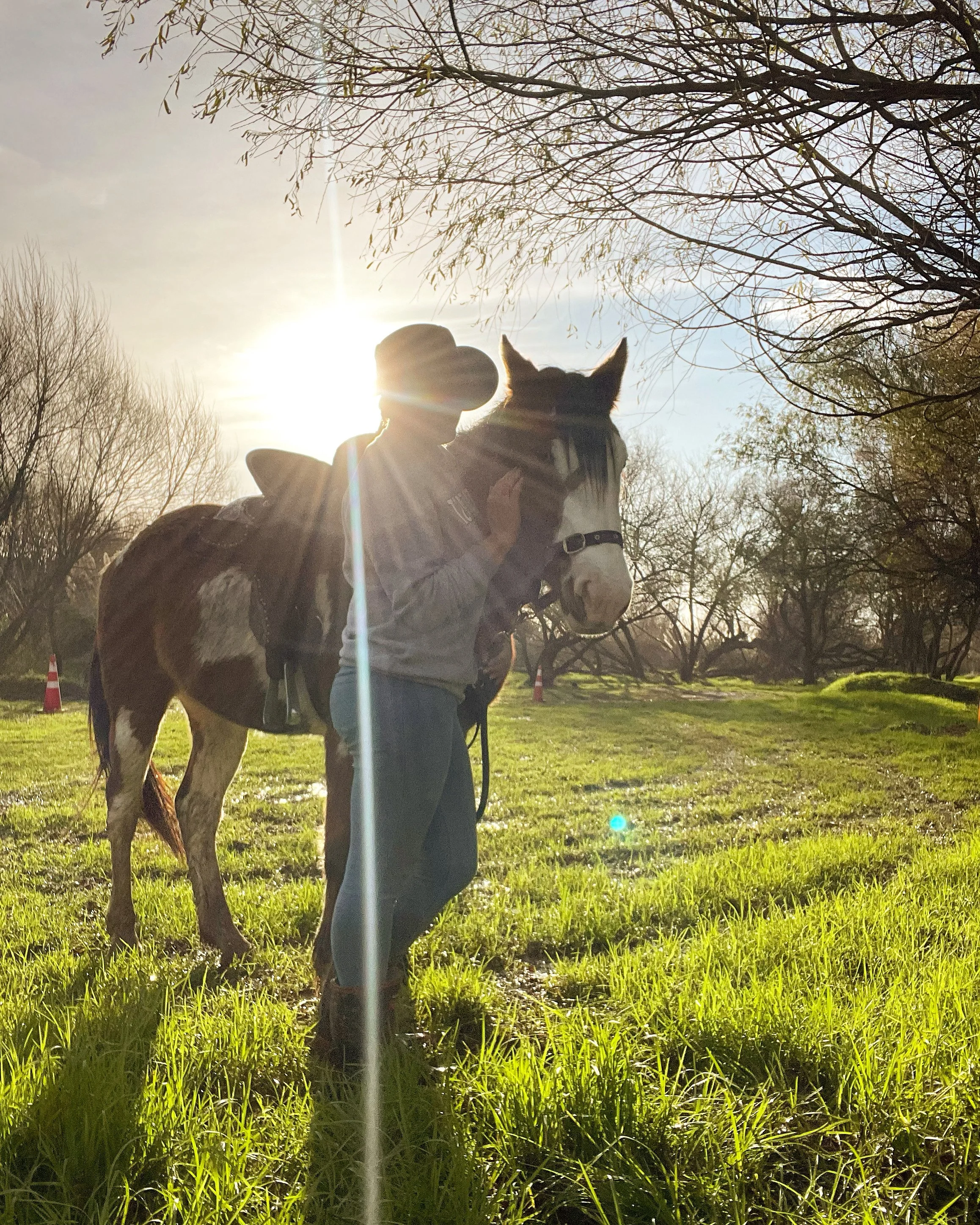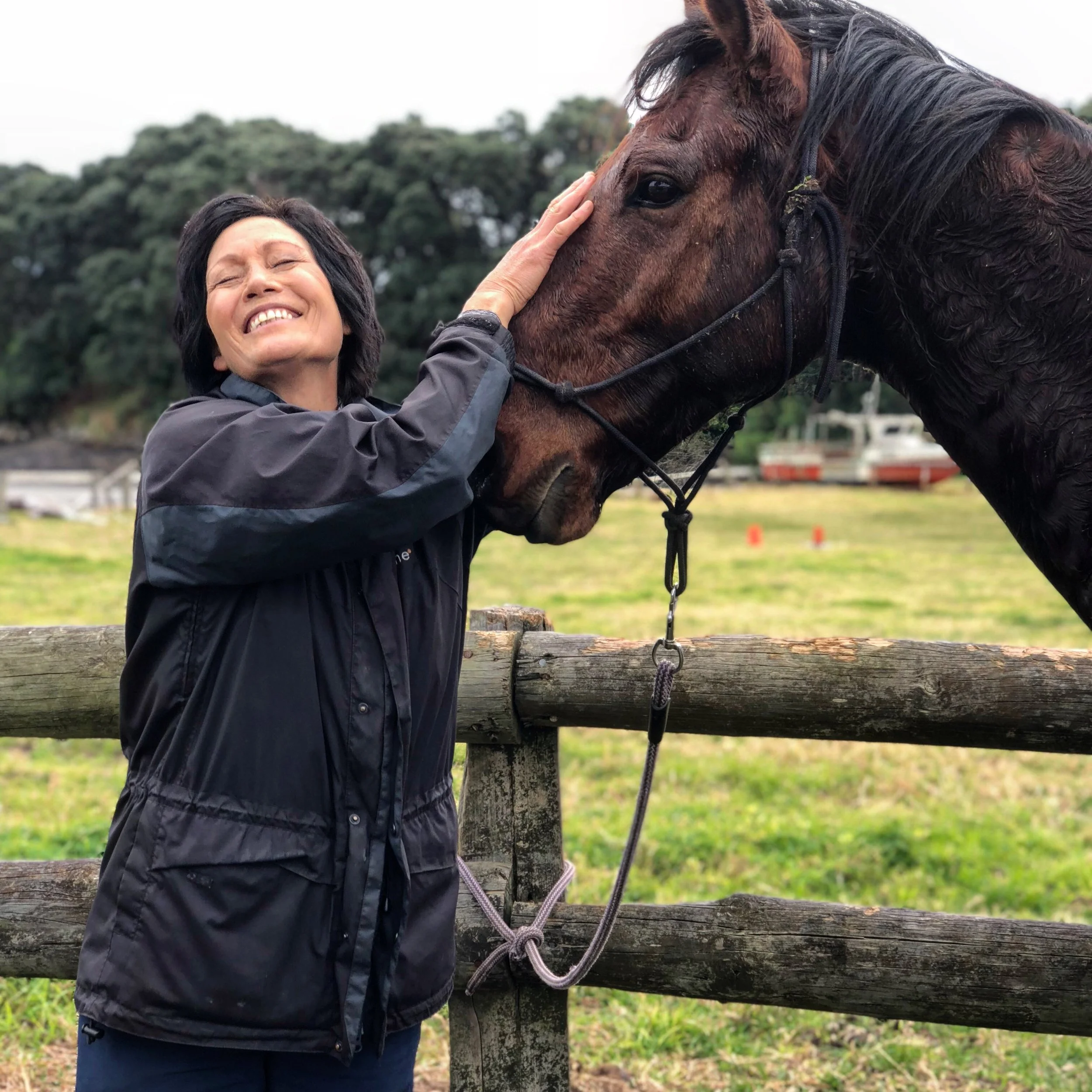How Horses Communicate — And How We Can Learn to Listen
Introduction: Why This Matters
Horses don’t speak our language — but they’re always communicating. They respond not to our words, but to our breath, our presence, our truth. When we take the time to learn their language, we don’t just become better with horses — we become better listeners, better leaders, and more grounded in ourselves.
And as we become more attuned to horses, something else begins to shift: we start to carry those same communication skills into our human relationships. The patience, awareness, and respect we practice in the paddock begin to ripple out into the rest of our lives.
The Basics: How Horses Communicate
Horses communicate primarily through body language. Every part of their body — ears, eyes, muzzle, posture, and tail — offers insight into how they’re feeling and what they’re experiencing.
The ears are often the first sign of attention or emotion. Forward-facing ears usually show curiosity or alertness. Pinned ears may mean discomfort or tension. When ears are swivelling, the horse is paying attention to multiple things in its environment — always listening, always aware.
Their eyes give us another layer of understanding. Wide eyes can indicate fear or high alert, while soft, blinking eyes show relaxation and trust. A horse that’s blinking slowly is often processing information or calming itself after something stressful.
The muzzle and mouth are also important. Tension around the lips or a clenched jaw can be a sign of discomfort. When a horse licks and chews, it’s often a release of tension — a sign they’re settling or accepting a new experience. Flared nostrils might show excitement or alertness, depending on the situation.
A horse’s head and neck position help complete the picture. A high head can suggest alertness, uncertainty, or anxiety. A lowered head is often a sign of calm and connection.
Their tail is a key signal too. A relaxed, swinging tail usually means the horse is comfortable. A swishing tail may indicate irritation, while a clamped tail can point to stress or unease.
And finally, their overall body posture ties it all together. A horse that turns away might be offering space or calming itself. One that leans in could be curious or seeking connection. A still, square stance often shows that the horse is attentive and settled.
Horses feel your presence before you speak. Intention matters more than words.
Beyond the Body: Energy and Intention
Horses are experts at reading what’s not said. They respond to the energy, intention, and presence of those around them. It’s how they stay safe — by tuning in to the smallest shifts in their environment and in others.
They pick up on things we often miss in ourselves — tension in the shoulders, a change in breathing, the way we enter a space. Horses don’t need us to speak. They feel who we are and respond to that.
That’s why working with horses invites us to slow down. When we become more aware of our own body and energy, we begin to communicate more clearly — even without saying a word.
Why This Helps People, Too
Many people who come to work with our horses are carrying things — stress, anxiety, trauma, disconnection. Horses don’t ask for explanations. They simply respond to who’s in front of them, in that moment. That kind of honest, non-verbal feedback helps people feel seen and accepted, just as they are.
Being with horses teaches us to slow down, to notice our breath, to soften our energy. We begin to tune into body language — not just theirs, but ours too. Over time, we learn to listen more, react less, and communicate with greater awareness and intention.
And those skills don’t stay in the paddock.
The same presence and sensitivity we develop with horses can be carried into our human relationships. We become more attuned to the people around us — how they’re feeling, what they might be saying without words, when they need space or support. We learn to respect boundaries, to respond rather than control, and to lead with curiosity rather than assumption.
Whether it’s in our whānau, our friendships, our workplaces, or with ourselves — the ability to listen deeply, hold space, and move with intention is something horses can teach us in the quietest, most lasting ways.
At Standfast: What We Teach
As people, it’s natural to want to feel in control — especially when we’re unsure or trying to stay safe. With horses, this can often show up as using pressure or dominance to get a result. But when we lead with control, we sometimes miss the chance to build trust.
At Standfast, we offer a different approach. We teach people to work with horses in a way that honours their sensitivity and natural communication. It’s not about being the boss — it’s about becoming someone the horse wants to be with.
We guide people to notice their own presence, energy, and timing — and how that affects the horse. We use groundwork and quiet observation to help people build confidence and trust without force.
The result is a partnership built on respect, understanding, and feel — where both horse and human feel seen and safe.
Ready to Learn More?
The lessons we learn from horses — about presence, patience, and honest communication — don’t just make us better horse people. They help us become better humans.
We run horsemanship and healing workshops on our whenua throughout the year. Whether you’ve never worked with horses or are coming back after time away, we welcome all who are open to learning.
If you’re ready to explore a way of being with horses that builds trust, connection, and awareness — and brings that learning into every part of your life — we’d love to meet you.
